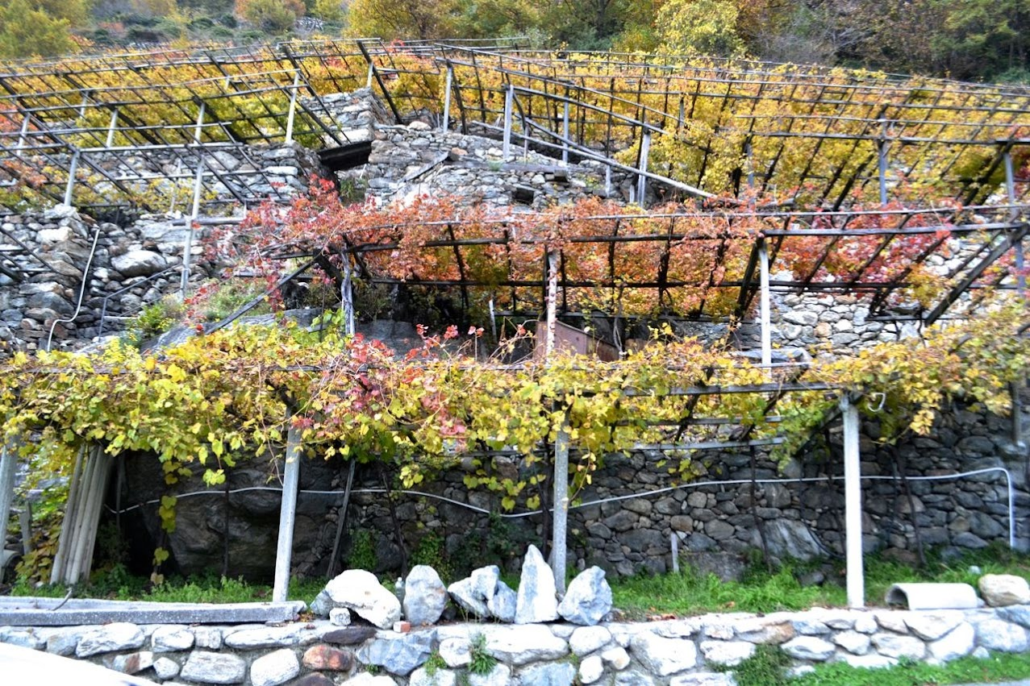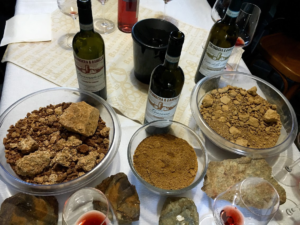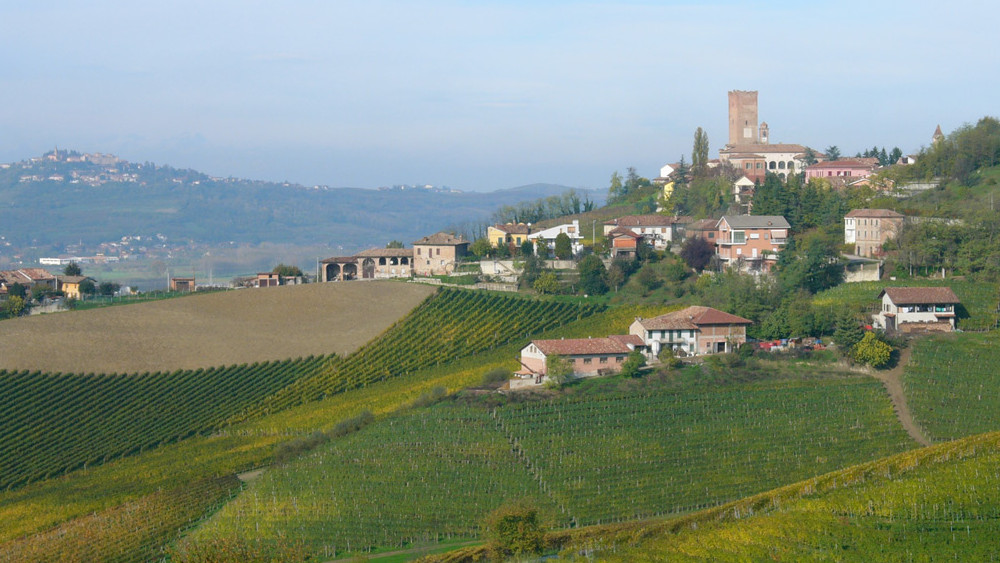Any thoughtful conversation about why a particular wine tastes the way it does is going to get down and dirty–that is, delve into the soil types in the vineyard. The physical and chemical mechanisms by which different soil types (limestone, granite, schist, various volcanic rocks, etc.) influence wine flavor aren’t yet well established, but there are recognizable aromas and flavors that we can associate with these types. Here are four examples of different soil types and the nebbiolo wines they produce.

The granite-based vineyards of Caves de Donnas
Granite: 2018 Caves de Donnas Vallée d’Aoste Classico
The vines here in the far northwest of Italy grow on crazy-steep terraces of almost pure granite. Granite, along with the relatively high latitude and altitude of the vineyards around the town of Donnas, give acidity, minerality, and a brighter (even “crunchy”) quality to the fruit. Think less-ripe red fruit rather than dark cherries, with an alpine twang. Nebbiolo’s famous floral notes are a little more evident, and its darker, tarry qualities are less prominent. (For a simpler, more budget-friendly example from the region, try the 2020 Caves de Donnas Vallée d’Aoste – Barmet.)
Volcanic sand: 2016 Colombera & Garella Bramaterra – Cascina Cottignano

The volcanic sand of Bramaterra (left); marine sand of Lessona (center)
Volcanic soils are a feature of much of the Alto Piemonte (but not all– compare the next wine). The Cascina Cottignano vineyard’s soil is iron-rich and therefore rusty-red decomposed volcanic sand. The volcanic part gives a darker quality to the minerality compared to granite, and the iron content adds a ferrous and even sanguine note to the fruit. Volcanic soils tend to be high in acidity, resulting in wines whose structure comes more from acidity than from tannin, certainly when compared with Barbaresco and Barolo.
Marine sand: 2018 Colombera & Garella Lessona – Pizzaguerra
The Pizzaguerra vineyard is just a mile from Cascina Cottignano, and yet the soils in the former are not volcanic at all, but rather sand from an ancient seabed. Marine sand (which is what we usually mean when we say “sandy soils”) gives elegance, perfume, and delicacy–less power, more prettiness.
Calcareous marl (limestone/clay): 2018 Produttori del Barbaresco Barbaresco
A combination of limestone and clay, sometimes with some sand in the mix, is the classic soil type found in both Barbaresco and Barolo in the Langhe. Like granite, limestone gives minerality, acidity, and freshness, but it also provides tannin and age-worthiness. Clay gives richer fruit, weight, and fullness. This combination of tannin and body makes for nebbiolos that are more powerful and imposing, compared with the other three terroirs described here.

